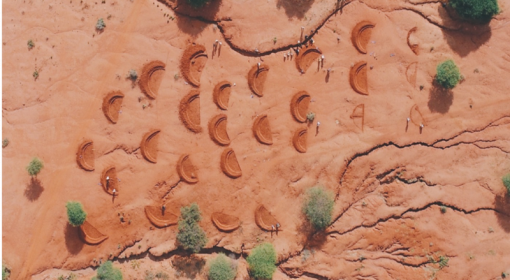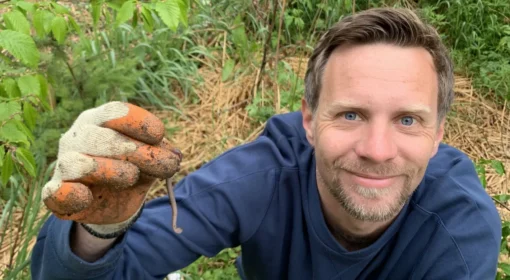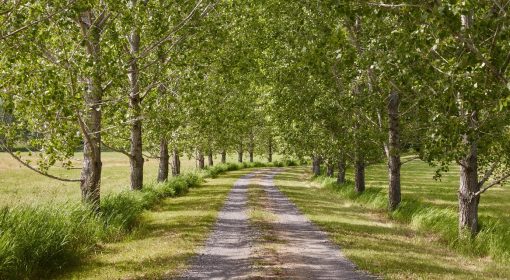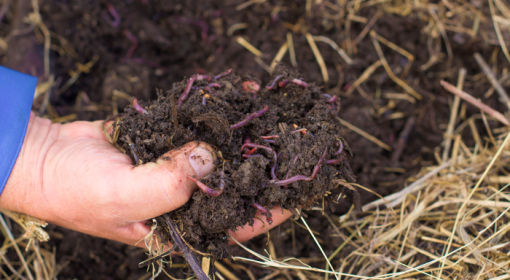by Francesco Sambalino, Programme Manager (MetaMeta), Proprieter (Petricor Farms)
The author took over a farm in Spain with depleted soil lacking key nutrients and organic matter. In this post, he shares how he is trying to bring it back to good health.
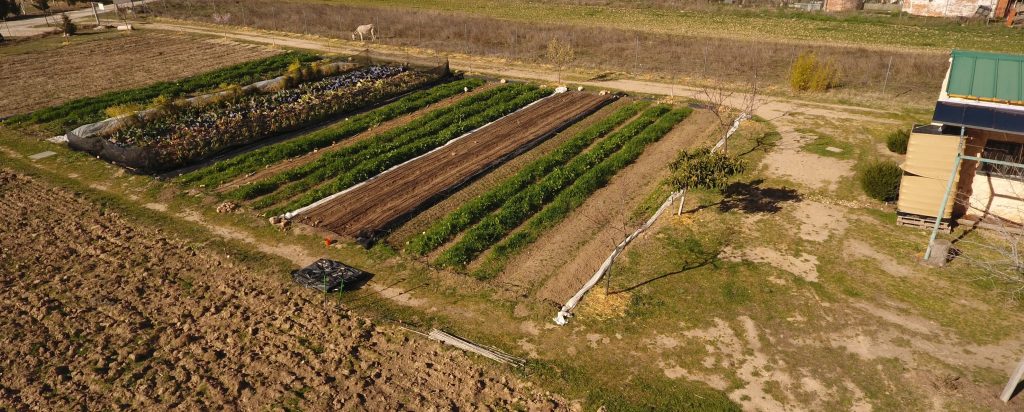
We are what we eat, but our eats are what they eat too.* To ask what a cow eats would be the dumb question at a quiz show (spoiler: cows eat grass – in theory), but to ask the same for plants is not quite the same. We’d all press the red button but with hesitation, fearing not recollecting all details.
Plants are more complex to explain than cows. They don’t share many features with us. There is no mouth to be seen. They don’t move. Carbon dioxide and sunlight are not food for us. And then there is soil. A microcosm of reactions, interactions, minerals and organisms, which we barely understand in its ever-changing complexity.
In this blog we explore plant-soil interactions and how we are optimising them at Petricor Farms. How can we support soils to feed plants optimally? And how can we support plants to feed the soil?
How plants eat
A long story (very) short: Plants capture carbon from the atmosphere and mix it with other ingredients to form proteins, carbohydrates, lipids, nucleic acids and a myriad of other compounds. These compounds are the bricks of life on earth; above and below ground, above and under water. All of us (heterotrophs)—be it a mammoth, an elephant or a smart monkey—re-utilise these bricks to build our bodies and power them.
It is not only about carbon. More material is necessary to create these compounds. While carbon comes from the air and hydrogen comes from water, most nutrients** are retrieved from the soil. The capacity of a plant to thrive is highly dependent on the nutrients it can take up from the soil and all processes (and life forms) that make it possible.
There are many types of soil nutrients. Some are called macro-nutrients because are needed in big amounts. The famous trio formed by Nitrogen, Phosphorous and Potassium falls in this category along with the less glamorous Sulphur, Calcium, and Magnesium (Karthika 2018). They are key elements in plant nutrition, especially to produce primary metabolites. However, essential plant nutrients are more in number; 17 to be more precise (Brady 2008, Karthika 2018), excluding Hydrogen, Carbon and Oxygen. Plants can’t do without any of the 17. While the macronutrients are needed in higher amounts, others, called micro nutrients, are needed in tiny amounts. Both micro and macro nutrients are essential.
Compare micronutrients to what vitamins are for us. Can we do without them? No. Do we need buckets of them? No. A plant without vitamins – will get “scurvy”, become weaker and an easier target for nature’s clean-up gangsters: pests and diseases (Goussain 2002, Elmer 2014, de Mello 2021).
Nutrients are adsorbed by plants mostly in their ionic forms (Marschner, 2012 ). They need to have an electrical charge. This happens when the number of electrons don’t match the number of protons. Most nutrients are in their cationic forms (as ions with electron deficit) (see table), but some are found in their anionic form (as ions with excess electrons).
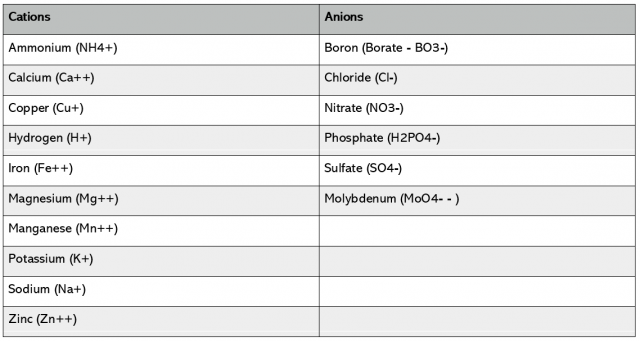
These charged molecules behave like tiny magnets and are stored in the soil thanks to electric charges of opposite signs. Anions will move towards positively charged areas, whereas cations will seek negatively charged targets. Any given soil’s capacity to retain cations is particularly important. This is called cation exchange capacity (CEC) and is mostly provided by clay particles and organic matter. A small fraction of clay is present in virtually any soil, but more sandy soils struggle to retain nutrients in a cationic form. When clay doesn’t do the trick, Soil Organic Matter (SOM) ‘may’ come to the rescue. I say ‘may’ because SOM is severely depleted in most soils. SOM, unlike clay, also has the capacity to retain and exchange anions.
The story gets more dynamic. Not only do nutrients stick to clay and SOM, they move around all the time. They are dissolved in the soil water solution. They are held in organic matter as part of more complex organic compounds – alive and dead (Basile-Doelsch, 2020). They are also the bricks that constitute all microbes which mediate and fuel plant nutrition through their life cycles and refined symbiosis.
If the soil nutrients are lacking in the first place, there is little to mediate and plants can’t grow to their full potential.
A balanced diet
Soils are complex systems that marry geomorphology, chemistry and biology. Soil is like a bookshelf. Its main frame is formed by minuscule rock particles. Clay represents the main shelves that can hold nutrients. If you need more storage space, you’d want to add more shelves and compartment and that is a task for soil organic matter (SOM). SOM has a higher nutrient exchange capacity than clay (Parfitt, 1995). The books lined in the bookshelf represent the nutrients that are present in the soil.
If an element is very common in rocks around you, the soil is likely to be rich in that element too (Chesworth, 1991, Selinus 2013). If that element was lacking in the parent rocks or was washed away, that element is not simply there and plants may suffer. Too many times, the classic prescription is to just add organic matter in the form of manures, compost, mulches. And as a result, Kablam!– all is supposed to thrive. However if the organic matter was sourced locally, it is very likely having the same mineral profile and deficiencies of the soil we grow on; it won’t add to the soil the minerals that are inherently lacking. That is why soils sometimes need some remineralization along with addition of organic matter. It is true that we can make plants more efficient to absorb mineral residues, but what is there is what is there and will keep on decreasing if minerals don’t re-enter the system. We may have high organic matter, soil microbes on steroids, good mulches in place, but if certain nutrients are lacking the plants will still struggle.
In a rich soil beneath a prairie or a forest, plants may carry on indefinitely, without external inputs. In such a scenario, plants keep nutrients from leaching and eroding away. When a plant dies it returns the nutrients to the soil, that are then picked up by its offspring and neighbours. That is not the case in farming where nutrients are harvested and exported away. It would be a stable system if the farmer, after eating the harvest, would always carefully poo all over the field and when dead be buried in place for the joy of next year pumpkins. The farmer would also need to avoid nutrients leaching and limit soil erosion processes.”
Back to the farm
After this long detour, lets get back to our farm. At least from 1946, it was cultivated year-on-year with cereals until 2013. That means deep and repeated tillage and combine harvester traffic when the crops were ripe. It is only in the last 8 years that the farm has been subdivided to rent out parcels for vegetables production.
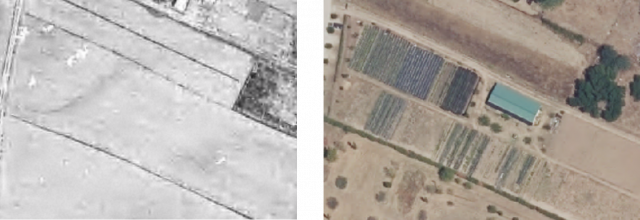
The top soil is sandy loam, with little structure and no stable aggregates. In this type of soil (luvisols), over time, finer clay sediments are flushed from the topsoil to the layers beneath where a clay pan forms.
From the soil lab report, the first take away point was that our soil has almost no SOM. At 0,63% it is a level that is almost too low to believe (should ideally be between 4-5%). But taking into account the farm history, we understood that decades of heavy tillage without any replenishment had driven SOM out of the system.
The average farm in Spain has 1,05 % Soil Organic Carbon (Rodríguez Martín, 2016), which corresponds roughly to 2.1 % SOM (Douglas W., 2006). So our soil was low in SOM even when compared to our neighbours. But what level is feasible for us? Could we perhaps aim at the level that is found in nearby grassland (3,27 % SOC – 6,54 % SOM)? Perhaps dreamy, but is nice to shoot for the stars.
The low SOM, together with the low level of clay minerals, strongly influences CEC. Ideally CEC should be above 10 milliequivalents (meq), but in our case it is 7,8 meq. The Low CEC tells us that keeping nutrients in the soil in their cationic form is difficult. We then decided to apply composted cow manure and horse manure to increase SOM and at the same time increase the levels of available nitrogen, which is also low. Increased SOM will also improve the capacity to retain nutrients in anionic forms.
Beside SOM and CEC, we also received a snapshot of a wide arrays of soil parameters: pH, Total Nitrogen, available Nitrogen, Electrical conductivity, Anions (Sulphur, Phosphorous), Cations (Calcium, Potassium, Magnesium, Sodium, other basis, H+), micronutrients (Boron, Iron, Manganese, Copper, Zinc, Aluminium, Cobalt, Molybdenum, Selenium, Silicon).
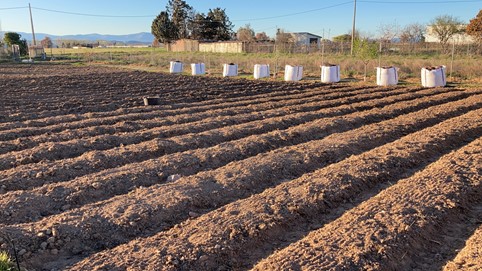
Available Nitrogen was very low and that’s the second reason why we applied composted cow and horse manure by the truckload, together with some humates. Phosphorous and magnesium were also a bit low and were resupplied in the form of phosphate rocks and magnesium sulphate (Epsom salts). Epsom salt, together with Gypsum also tackled the strong Sulphur deficiency.
We also learnt that a whole range of micro nutrients were out of balance. While we have lack Boron, Zinc, Copper and Molybdenum, we have too much Iron, and Manganese. The micronutrients, although essentials, especially as cofactors in the protein synthesis, are needed in small amounts. We decided to supply them through foliar applications (sprayed on leaves) during the growing season.
The outlook
The amendments, together with a no-till regime ARE displaying initial results. The soil colour has turned from pale cardboard to a beautiful dark chocolate tinge. You can easily dip your finger into the soil, while our over at out neighbours you would need a chisel. We can now use light hand-tools to weed between plants, which was not an option before if you didn’t want sore muscles and to change blades every fortnight.
The plants did generally well. We had the first ever carrots grown in the area– a proof of improved soil bulk density and improved soil health.
As a new cropping season is about to start, we planted cover crops on half of our field. A cocktail of hairy vetch, tillage radish and rye will keep the soil microbes active over winter. It will also enrich the soil with nitrogen and SOM, loosen the subsoil hardpan, trap nutrients from leaching and protect the farm from erosive rainfall.
We have many ideas for the coming spring. We’ll start by analysing the soil at the same lab to see where we are in our journey of boost soil health. We’ll dive into plant sap analysis (similar to a blood report in humans) to see what nutrients are picked by plants. We’ll hopefully have a chance to have a second look at the microbes in our soil.
From observations to action, we’ll keep gently steering the mineral profile of our land with mineral amendments, while improving its soil food web. We’ll inoculate the soil with Plant Growth Promoting Bacterias (Olle 2013; Colla 2019) and mycorrhizal fungi. This will ensure that some key microbes, that are not necessarily present in the surrounding ecosystem anymore, find their place in our soil food web.
Efficient photosynthesis needs well-fed plants. Plants are well-fed when the right mineral and biological balance is maintained in the soil under our feet. Well-fed plants produce healthier plants, healthier food and healthier everyone. We hope we are on the right track.
*Freestyle reinterpretation of Pollan’s famous quote: ‘You are what what you eat eats”. Taken from in Defence of Food.
**Elements/minerals in plant science are commonly called nutrients, even though in street slang the word nutrient often refers to the bigger compounds (proteins, carbohydrates, lipids). We use nutrients and minerals interchangeably.
References
Basile-Doelsch, Isabelle et al. “Reviews and syntheses: The mechanisms underlying carbon storage in soil.” Biogeosciences 17 (2020): 5223-5242.
Brady, Nyle C.; Weil, Ray R. (2008). The nature and properties of soils (14th ed.). Upper Saddle River: Pearson.
Chesworth, Ward. “Geochemistry of Micronutrients.” Micronutrients in Agriculture (1991): n. pag.
Colla, Giuseppe, and Youssef Rouphael. Biostimolanti per un’agricoltura sostenibile: cosa sono, come agiscono e modalità di utilizzo. Edizioni L’Informatore Agrario, 2019.
de Mello Prado, Renato. “Mineral nutrition of tropical plants.” Mineral nutrition of tropical plants (2021): n. pag.
Douglas W. Pribyl, A critical review of the conventional SOC to SOM conversion factor, Geoderma, Volume 156, Issues 3–4, 2010, Pages 75-83, ISSN 0016-7061
Elmer, Wade H. and Lawrence E. Datnoff. “Mineral Nutrition and Suppression of Plant Disease.” (2014).
Goussain MM, Moraes JC, Carvalho JG, et al. Effect of silicon application on corn plants upon the biological development of the fall armyworm Spodoptera frugiperda (J.E. Smith) (Lepidoptera: Noctuidae). Neotrop Entomol. 2002;31:305–10. https://doi.org/10.1590/ S1519-566X2002000200019.
Jindo, Keiji et al. “Role of biochar in promoting circular economy in the agriculture sector. Part 1: A review of the biochar roles in soil N, P and K cycles.” Chemical and Biological Technologies in Agriculture 7 (2020): 1-12.
Karthika, Karunakaran et al. “Biological Functions, Uptake and Transport of Essential Nutrients in Relation to Plant Growth.” (2018).
Marschner, Horst and Petra Marschner. “Marschner’s Mineral Nutrition of Higher Plants.” (2011).
Mennan, Husrev et al. “Non-Chemical Weed Management in Vegetables by Using Cover Crops: A Review.” Agronomy 10 (2020): 257.
Olle, Margit and Ian Williams. “Effective microorganisms and their influence on vegetable production – a review.” The Journal of Horticultural Science and Biotechnology 88 (2013): 380 – 386.
Parfitt, R. L. et al. “Contribution of organic matter and clay minerals to the cation exchange capacity of soils.” Communications in Soil Science and Plant Analysis 26 (1995): 1343-1355.
J.A. Rodríguez Martín, J. Álvaro-Fuentes, J. Gonzalo, C. Gil, J.J. Ramos-Miras, J.M. Grau Corbí, R. Boluda, Assessment of the soil organic carbon stock in Spain, Geoderma, Volume 264, Part A, 2016, Pages 117-125,
Selinus, Olle. “Essentials of Medical Geology: Revised Edition.” Essentials of Medical Geology (2013): n. pag.
